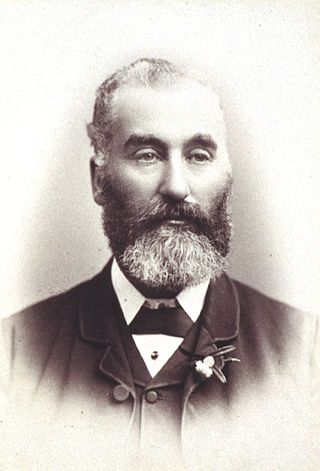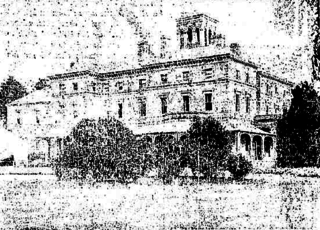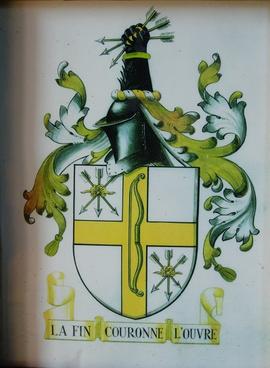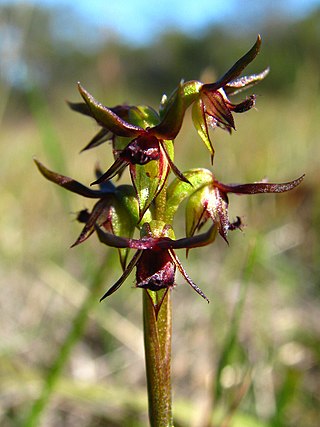Related Research Articles

Longford is a town in the northern midlands of Tasmania, Australia. It lies 145 m above sea level at the convergence of the Macquarie River and the South Esk River, 21 km south of Launceston and a 15-minute drive from the airport. It is just south of the Illawarra Road, a road connecting the Bass and Midland Highways. It has a population of 3,863 and is part of the Northern Midlands Council area. The region is predominantly agricultural, noted for wool, dairy produce and stock breeding.

The Hutchins School is an Anglican, day and boarding school for boys from pre-kindergarten to Year 12 in Hobart, Tasmania. Established in 1846, Hutchins is one of the oldest continually operating schools in Australia. The school's students consistently rank among the highest academic achievers in Tasmania and nationally; it has had 24 Rhodes Scholars. The school is located just under four kilometres from the CBD of Hobart, The Hutchins School offers facilities including classrooms, science and computer laboratories, libraries, a performing arts centre, a recording studio and multiple sporting grounds. International students reside in the school's boarding facility, ‘Burbury House’, which in 2012 underwent a full refit and refurbishment. Hutchins is a founding-member of the International Boys' Schools Coalition (IBSC), and a member of Independent Schools Tasmania (IST). The Hutchins School is one of two boys' schools in Tasmania.

Diselma archeri is a species of plant of the family Cupressaceae and the sole species in the genus Diselma. It is endemic to the alpine regions of Tasmania's southwest and Central Highlands, on the western coast ranges and Lake St. Clair. It is a monotypic genus restricted to high altitude rainforest and moist alpine heathland. Its distribution mirrors very closely that of other endemic Tasmanian conifers Microcachrys tetragona and Pherosphaera hookeriana.

Bothwell, Tasmania is a small town with a population at the 2016 census of 485. Situated in central Tasmania on the River Clyde in a broad valley, it is notable for hunting and being a lake district. It is part of the municipality of Central Highlands Council and will celebrate the bicentenary of its founding in 2022. Nearby locations include Hollow Tree, Hamilton, Ouse and Kempton.

Ronald Campbell Gunn, FRS, was a South African-born Australian botanist and politician.
John Lee Archer was the Civil Engineer and Colonial Architect in Van Diemen's Land, serving from 1827 to 1838. During his tenure, Archer was responsible for all Tasmanian government buildings including those for penal and military purposes.

Cortinarius archeri is a species of mushroom in the genus Cortinarius native to Australia. The distinctive mushrooms have bright purple caps that glisten with slime, and appear in autumn in eucalypt forests.

Sir John George Davies, generally known as (Sir) George Davies, was a Tasmanian politician, newspaper proprietor and first-class cricketer.

Brickendon Estate is a farm estate located in Longford, Tasmania. It is one of the two main ancestral homes of the Archer family, prominent local pioneers and politicians.

Woolmers Estate is a farming estate located in Longford, Tasmania, founded in 1817 by prominent grazier and member of parliament Thomas Archer. It consists of an 82ha property, including a two-part manor house, coach house, the National Rose Garden, extensive outbuildings and convict cottages and formal gardens. The main house consists of a brick nog weatherboard homestead, built in 1819, with an attached extensive addition in Italiate style, designed by William Archer and built in 1842-1843. From the 1819 completion of the main house to 1994, it was one of the main ancestral homes of the Archer family.

Mona Vale is a large heritage listed 1860s country house in Ross, Tasmania. Completed in 1867, it is well known locally as the "Calendar House", for its reportedly 365 windows, 52 rooms, 12 chimneys and seven entrances. The property is on the Tasmanian Heritage Register and the Register of the National Estate.

The Archer family are a notable family in Tasmania, Australia, prominent in society, business and politics of Tasmania for the last two centuries. They are best known today for their now world-heritage listed farm estates, Brickendon Estate and Woolmers Estate, but have contributed to many areas of Tasmania throughout their history. Other members of the family have been Mayors of Hertford in England and participated in the American Civil War.
Cheshunt House is an Italianate mansion in the Meander Valley, Tasmania, 10 kilometers from Deloraine. It was designed and originally owned by politician, botanist and architect William Archer, started in 1851-52. It was purchased incomplete by the Bowman Brothers from William Archer in 1873, who completed it to his design in 1885. It fell into disrepair during the period of the World Wars and the Great Depression, before a restoration project was undertaken by the family in the 1970s. It is still owned by the Bowman family.

Horton College was a 19th-century independent Wesleyan methodist boys' boarding school, at Mona Vale near Ross, Tasmania, Australia. Founded by Captain Samuel Horton in 1855, the College closed in 1894; and during its brief period it was considered an extremely prestigious school, counting many of the region's landed families of the period as students.

Robert William Morris-Nunn is an Australian architect.
The Tasmanian Heritage Register is the statutory heritage register of the Australian state of Tasmania. It is defined as a list of areas currently identified as having historic cultural heritage importance to Tasmania as a whole. The Register is kept by the Tasmanian Heritage Council within the meaning of the Tasmanian Historic Cultural Heritage Act 1995. It encompasses in addition the Heritage Register of the Tasmanian branch of the National Trust of Australia, which was merged into the Tasmanian Heritage Register. The enforcement of the heritage's requirements is managed by Heritage Tasmania.

Genoplesium archeri, commonly known as the elfin midge orchid and as Corunastylis archeri in Australia, is a small terrestrial orchid endemic to south-eastern Australia. It has a single thin leaf fused to the flowering stem and up to fifteen small, hairy, yellowish green flowers with purple stripes. It grows in a wide range of habitats in New South Wales, Victoria and Tasmania.
Frank Archer was a Tasmanian politician. He was a member of the Tasmanian House of Assembly from 1893 until his death, representing the electorate of Selby.
Charles Beaumont Barnes Grubb was an Australian politician.
References
- 1 2 3 4 5 6 7 G. T. Stilwell (1969). Australian Dictionary of Biography. Vol. 3. Melbourne University Press . Retrieved 17 July 2013.
- ↑ "William Archer". Members of the Parliament of Tasmania . Retrieved 24 July 2022.
- 1 2 3 4 5 6 7 8 "William Archer – Biography". daao.org.au. Retrieved 14 May 2015.
- ↑ Quattrocchi, Umberto (2006). CRC world dictionary of grasses common names, scientific names, eponyms, synonyms, and etymology. Boca Raton, FL: CRC/Taylor & Francis. p. 99. ISBN 9781420003222.
- ↑ Mayfield, Enid (2010). Flora of the Otway Plain and Ranges 1: Orchids, Irises, Lilies, Grass-trees, Mat-rushes and Other Petaloid Monocotyledons. Csiro Publishing. p. 99. ISBN 9780643102002 . Retrieved 31 December 2014.
- ↑ International Plant Names Index. W.Archer bis.